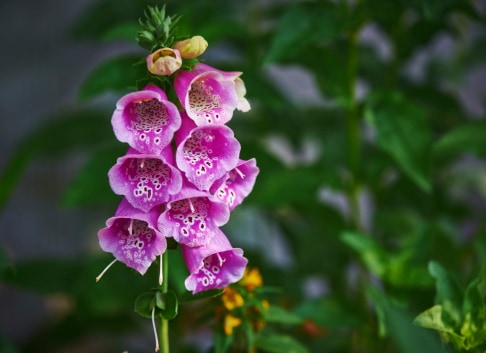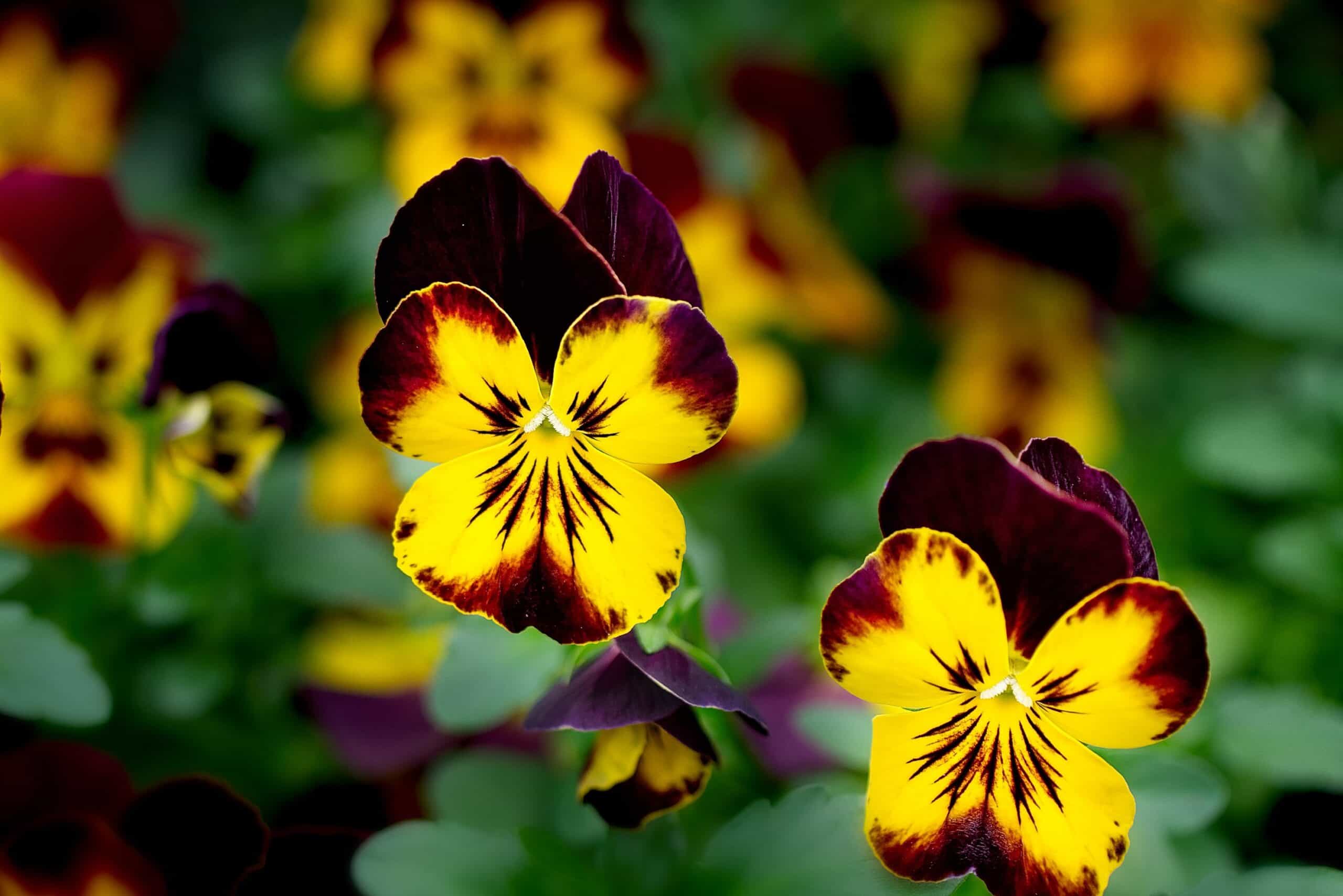The Foxglove (Digitalis purpurea) has a storied past in both traditional and modern medicine, as well as being popular in gardens around the world. The name is derived from “folksglove” more commonly known as fairy-fingers an old English name given the plant due to the shape of its flower. The Greeks used the plant for medicinal purposes, attempting to cure headaches amongst many other ailments.
How to Plant
The Foxglove is best grown in the garden rather than indoors. Plant them in the spring and they will flower in the summer. Dig the soil to loosen and aerate the soil before planting. Choose an area that has well-drained soil and gets a lot of sunlight throughout the day. The ideal soil pH is 6.0-7.0 and the plant loves moist to wet soil. A moderate amount of fertilizer should be used to help the plants grow. If planted in containers, choose ones that are deep and wide enough to accommodate the Foxglove’s roots. Use soil that is free draining and specific to container planting.
Meaning and Symbolism
The Foxglove has a long history in the interpretation of its symbolism. In the English language, it is used as a symbol of insincerity or a lack of sincerity. In Christian culture, Foxglove is a representation of mortality due to its toxicity and its association with death. In some parts of Europe, the plant also symbolizes female protection. It is also associated with protection against malevolent forces.
History, Mythology, and Religious Significance
Foxglove is thought to have been used by druids as a form of medicinal plant with symbolic power, and in more recent times in Ireland, the plant had dietary and medicinal purposes. In both the Celtic and Greek civilizations, the plant had mythical significance, with the Irish believing it to be a source of magical and healing powers. In the Christian tradition, Foxglove was thought to be able to ward off evil spirits and was used as a symbol of protection.
Flower Varieties and their Defining Characteristics
Digitalis purpurea, commonly known as Foxglove, is a biennial or short-lived perennial plant belonging to the Plantaginaceae family. Its defining characteristics include its tall, bell-shaped flowers with spotted throats in a deep purple or white. Its flower comes in many varieties including:
- Digitalis purpurea var. alba: White blooms
- Digitalis purpurea ssp. chlorantha: Pale yellow blooms
- Digitalis purpurea ssp. grandiflora: Pink blooms
- Digitalis purpurea ssp. heywoodii: Pinkish-purple blooms
- Digitalis parviflora: Unique yellow blooms
How to Pot and Repot
Foxglove can be grown indoors in containers and requires a very distinct potting and repotting process, based on which type of container is used. If a container with no drainage holes is used, the bottom layer of soil must remain dry and a layer of rocks must be placed on the bottom prior to filling the container halfway with soil. When transplanting Foxglove from one container to another, the potting soil should be kept moist. Place the Foxglove in the new container, fill it with soil and but firmly press down around the base of the plant in the new container. Water lightly and then place the pot in a bright area out of direct sunlight.
How to Prune
Pruning Foxglove is an essential step in keeping the plant healthy and encouraging new growth. Pruning is most important to remove the spent blooms and seed heads and should be done before the seed heads mature and set seed. This is done to prevent the self-seeding of the Foxglove in an area and to maintain a neat look in the garden bed. Pruning should always be done with a sharp pair of shears. Begin by cutting the flower stalk down to the main branch and then cut away shoots as needed to remove browning leaves and fertilized seed heads.
How to Propagate
Propagation of Foxglove can be done through both seed or stem cuttings. To propagate the Foxglove through seed, the seed needs to be collected from the seedheads of the parent plant. Once harvested, the seeds must be sown directly into moistened soil. Stem cuttings can be taken from the tips of the parent plant, which should have at least three to five leaves growing on it. Cut the stem off as close to the node as possible just under a pair of leaves. It is preferable to take cuttings in the evening and place them in a glass of water until the next morning.
Common Pests and Diseases
The Foxglove is susceptible to several pests and diseases. Aphids are common pests of the Foxglove and can be treated with a natural insecticide such as neem oil. Rust can be a problem and can be treated with a fungicide or if caught early, with an insecticidal soap. Slugs and snails can also attack the plant and can be controlled with a beer bait or other hardware. Additionally, the Foxglove is susceptible to root rot, especially in too wet soil.
Frequently Asked Questions
- Can I grow Digitalis purpurea indoors?
Yes, as long as you provide good light, soil and temperature conditions you can grow the Digitalis purpurea indoors. It is best to choose a deeper and wider pot to accommodate the plant’s roots. - Which type of soil should I use for Digitalis purpurea?
The best soil to use for Digitalis purpurea is a well-drained soil with a neutral or slightly acidic pH. Adding organic matter is also recommended for improving soil structure. - What garden conditions is Digitalis purpurea suitable for?
Digitalis purpurea is a sun-loving plant that grows best in full sun or partial shade. It is also suitable for both moist and wet soils.
Fact Sheet
| Foxglove | Digitalis purpurea |
|---|---|
| Family | Plantaginaceae |
| Plant Type | Biennial/Perennial |
| Mature Size | Up to 6 feet |
| Sun Exposure | Full Sun/Partial Shade |
| Soil Type | Well-drained, moist/wet |
| Soil pH | Neutral/Slightly Acidic |
| Bloom Time | Early – Midsummer |
| Flower Color | Purple, White, pink, yellow |
| Hardiness Zones | 4-8 |
| Native Areas | Europe and Parts of Asia |
What we love from Amazon this week
Buy these wonderful flowers directly from Amazon:















